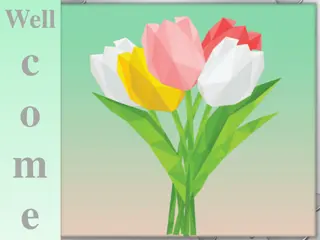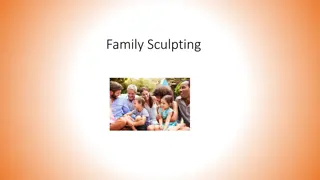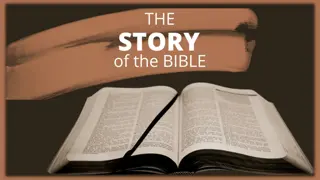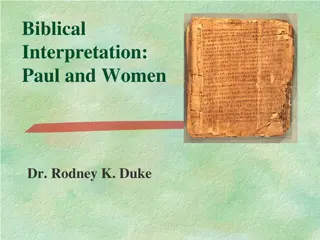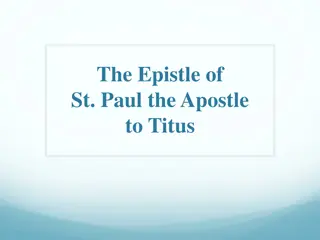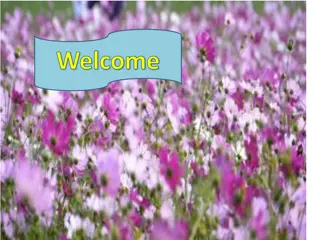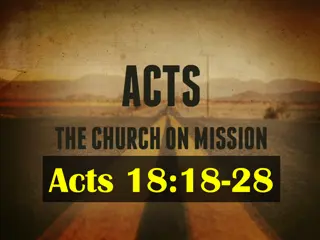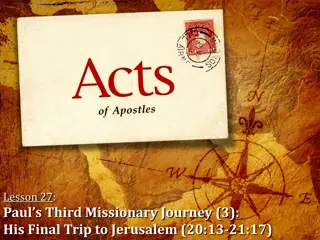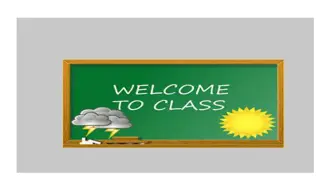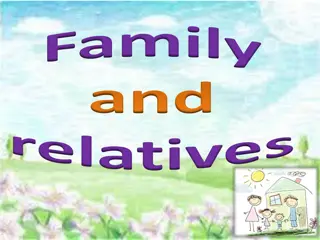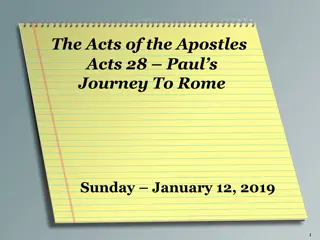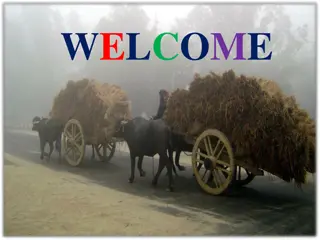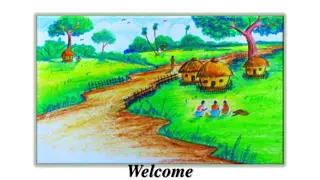Exploring Paul and His Family in English Lesson 7
In this English lesson, students delve into the lives of Paul and his family, learning vocabulary related to animals and food. The lesson aims to enhance reading comprehension, question formation, and writing skills. Students will engage in activities such as filling out tables and using words like likes, dislikes, loves, and hates to describe family members' preferences. The lesson also introduces key vocabulary words such as feed, rabbit, run around, insects, and bush. By the end of the lesson, students are expected to read and understand texts, make questions and answers about likes and dislikes, complete writing tasks, and infer the meanings of certain words through context.
Download Presentation

Please find below an Image/Link to download the presentation.
The content on the website is provided AS IS for your information and personal use only. It may not be sold, licensed, or shared on other websites without obtaining consent from the author. Download presentation by click this link. If you encounter any issues during the download, it is possible that the publisher has removed the file from their server.
E N D
Presentation Transcript
INTRODUCTION MOHAMMAD AZHARUL ISLAM Assistant Teacher (English) Hugra Habib Kader High School Tangail Sadar Tangail CLASS: SEVEN SUBJECT: ENGLISH FIRST PAPER
What do you see in the picture? A Happy family
Today our topic Paul and his family Eight UNIT: LESSON: 7
LEARNING OUTCOMES OF THE LESSON By the end of the lesson the students will be able to Ss will read and understand text. Ss will make questions and answers about likes/dislikes. Ss will Complete guided and semi-guided writing task. Ss will Infer the meaning of some key words from the inference.
Vocabulary Feed To give food to a person or an animal. Meaning Mother feeds the ducks everyday .
Vocabulary Rabbit a plant-eating mammal with long ears, long hind legs, and a short tail. Meaning The rabbit is sitting.
Vocabulary Run around Meaning Run all sides. Henry is running around the track .
Vocabulary Insects A type of small creatures having six legs and a body divided into three parts. Insects usually also have wings. Meaning All these are called insects.
Vocabulary Bush A plant that grows thickly with several stems coming up from the roots; a shrub Meaning The children should not go to the bush.
Go to the textbook , section A and read the text and fill the table below. Use the words likes/doesn t like/loves/hates appropriately under each member of Paul s family. One is done for you. Thing/activity Paul Sister Mother Father Making sandwiches likes Watching animals loves loves Spiders hates Cooking hates doesn t like Flies
See the jumble words. Rearrange the words and make question from the box 1 and answer from the box 2. 1. she/ like /drawing/ does /picture/ a/? 2. likes / she /drawing/ yes, /a/ picture/. Q: Does she like drawing a picture? A: Yes, she likes drawing a picture.
See the jumble words. Rearrange the words and make question from the box 3 and answer from the box 4. 3. you/ waste/ like /throwing/ do / here and there /? 4.don t / I /like /throwing/ no, /waste/ here and there. Q: Do you like throwing waste here and there? A: No, I don t like throwing waste here and there.
See the jumble words. Rearrange the words and make question from the box 5 and answer from the box 6. 5. she/ like /herself/decorating/ does /flower/ a/with/? 6. loves / she /decorating/ yes, /a/ flower/with/herself. Q: Does she like decorating herself with a flower? A: Yes, she loves decorating herself with a flower.
See the jumble words. Rearrange the words and make question from the box 7 and answer from the box 8. 7. he/ like /in/working/ does /factory/ a/? 8. hates / he /working/ no, /a/ factory/in/. Q: Does he like working in a factory? A: No, he hates working in a factory.
Use the clues to make questions and answers about likes/dislikes. 2. They go to school. 2. She draws picture. Q: ( like ) ? A: ( Yes, like ) A: (Yes, like) Yes, she likes drawing a picture. Q: Do they like going to school? A: Yes, they like going to school.
Use the clues to make questions and answers about likes/dislikes. 2. She studies in load-shedding. Q: ( like ) ? A: ( No, not like ) Q: Does she like studying in load-shedding? A: No, she does not like studying in load-shedding.
Use the clues to write questions and answers about likes/dislikes. 1. They make garden. Q: ( like ) ? A: ( Yes, love ) Q: Do they like making garden? A: Yes, they love making garden.
Use the clues to write questions and answers about likes/dislikes. 1. The boy pulls garbage. Q: ( like ) ? A: ( No, hate ) Q: Does the boy like pulling garbage? A: No, the boy hates pulling garbage.
Look at the structure of making question and answer. Q: Does she like drawing a picture? Q: Do you like throwing waste here and there? 1. Structure of Question: Do/Does + Subject + like + verb + ing + others + ? A: Yes, she likes drawing a picture. A: No, I don t like throwing waste here and there. 2. Structure of Answer: Yes,/No, + Subject + like/likes/don t like/doesn t like/love/loves/hate/hates +verb + ing + others.
Home Work Write about what you like and don t like. (Not more than 10 lines)
Love and respect your family. Take care of each member s likes and dislikes. These are all for today.



